| What is special of ALUNA´s architecture?
Reflections on the collaboration between architecture and special education.
By
Dr. Hermann Siegenthaler
ALUNA is a masterpiece of architecture. This is the first impression the visitor receives. The colors and shapes of the houses, its location, the configuration of the site and the quality of its development: all of this constitutes artistic expression and creates the sensation of well-being and happiness. Whoever visits ALUNA never forgets this sensation, and I am sure he or she gladly returns to the site.
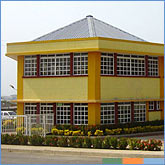 |
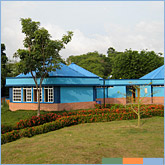 |
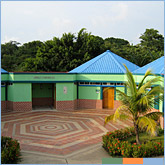 |
| Administration Building |
Aluna´s Blue Module |
Aluna´s Emerald Module |
But a masterpiece that deserves to be called as such is not a means in itself, as the saying goes “art for art’s sake”. ALUNA’S architecture illustrates the true meaning of this phrase truth in fulfilling a well-determined function: to stimulate the development of children and adults with disabilities. This is the reason why we must be interested in achitecture from the point of view of special education. We assign architecture a great task in this sense and see that architectural planning and the corresponding role of decision-making are not lost in these overall objectives.
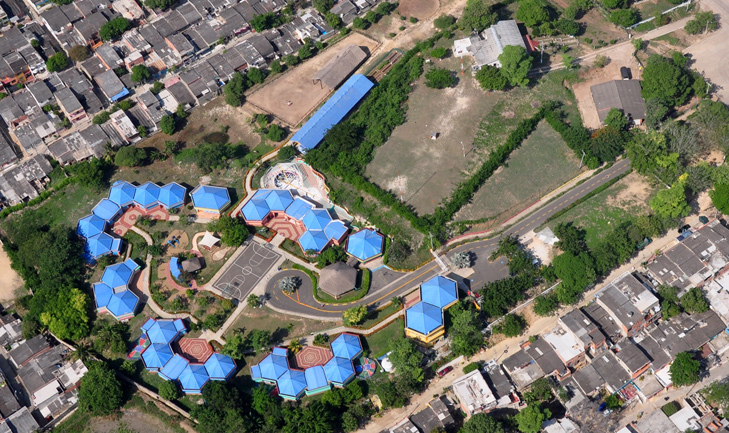 |
| Aerial photography by Jaime Borda M. |
Now, what are the means that allow architecture to be of service to disabled children an adults? To answer this question, I am going to give three examples.
I. In a general sense, the architecture of a place must awaken in the person that lives in it a sense of well-being. For this reason a balance between shapes and colors and also a clear and easily perceptible structure of the housing and other physical installations is necessary so that persons can – without difficulty – easily guide themselves though the site. This applies to the place at which the school bus leaves the children as they must be able to clearly identify and travel to the classrooms without obstacles.
II. At ALUNA children and adults who have cognitive and/or multiple disabilities are stimulated. Their disability has contributed to individual developmental delays in their sense of self. This sense of self, or individual ego, has been symbolized for centuries throughout all cultures with an emphasis in a central focus. In ALUNA’S architecture, the hexagonal classroom is no doubt one of the most outstanding traits. The hexagon shows two inscribed triangles, with equal sides with one side’s base in the superior part and the other in the lower part.
 |
| If we number the verteces in the hexagon and link the even and odd number of verteces we form two large regular triangles, laid out in such a way that the base of one is opposite to the base of the other. |
As a unit they represent the union of two opposites, such as up and down, heaven and earth, divine and humane, masculine and feminine, etc. with the main focus being the central point as the origin. In ALUNA’S classrooms, this is further highlighted and emphasized by the design of the floor tiles. Whoever stands in the center is centered on themself, being located in the focal point of space. Such hexagonal classrooms have a stimulating effect for persons with disabilities.
III. One of the main objectives of this mental stimulation with children who have problems in their development is to assist in their integration to everyday life. The child must be able—until it is possible, to live their life without the help of other people. An important aspect in his/her individual duties include going to the bathroom by themself, without the help of anybody. For this it is required that bathroom facilities are within the reach of the child, for example constructed to correspond with bodyheight. For this reason, in schools for small children there are small toilets next to the normal sized toilets. This example gives evidence of how architecture serves special education. Here you can clearly see how the architecture is placed at the service of special pedagogy. (this is not phrased quite right but not sure how/if to change it).
ALUNA is the result of the close collaboration between architecture and special education experts. In my inauguration speech, I said that ALUNA has a message to give. Its architecture also serves as a basis for our philosophy, essentially, that man is the center of all, in the present case, this applies to the children and adults with disabilities at ALUNA.
In my opinion, ALUNA’S architecture will set an example for modern Caribbean architecture. I congratulate everyone who has helped us.
LOCATION
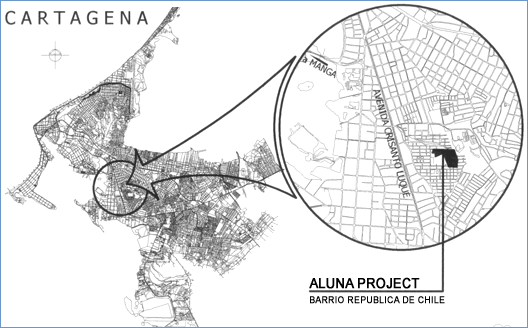 |
| Location of ALUNA project seat |
SUPPORTERS
View
PDF presentation (8 Kb) |